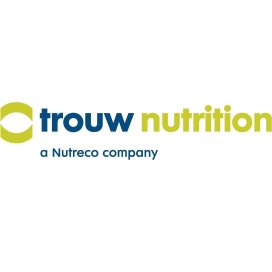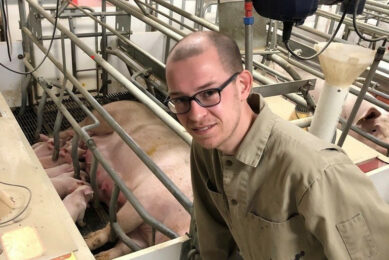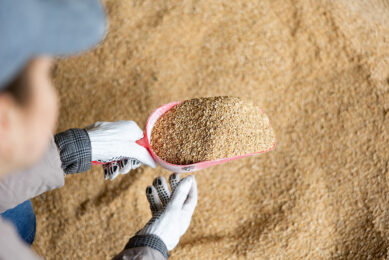What if there was a test drive for farm decisions?
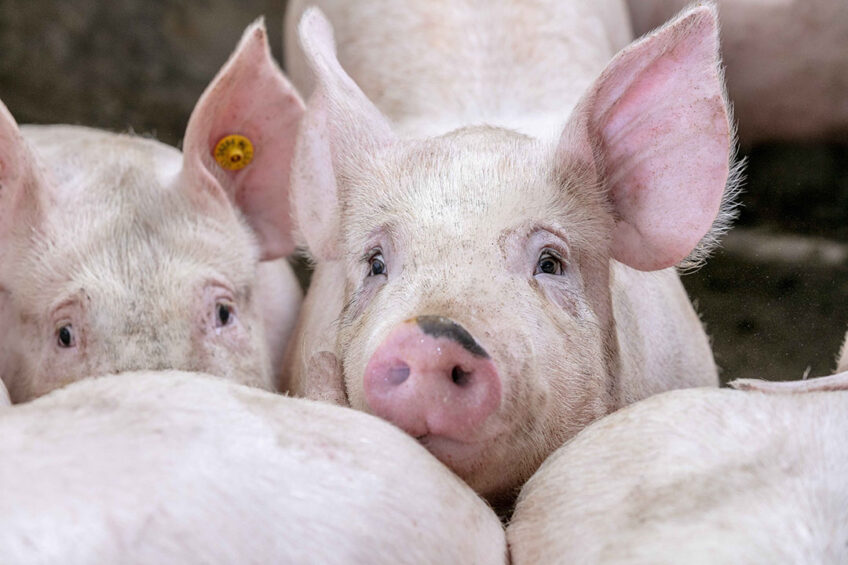
What if there was a way to “test drive” a change in herd nutrition or farm management practices before implementing the change on the pig farm? There is. With advanced modelling tools, we can now better predict and optimise pig production. Here is how.
If there is one constant in pig farming, it is that conditions on the farm and in the marketplace are continually fluctuating. Volatile commodity and energy prices, emerging regulations, and disease outbreaks challenge producers’ efforts to achieve uniform herds and consistent economics. What if there was a way to “test drive” a change in herd nutrition or farm management practices before implementing the change on the pig farm? What if it was possible to predict how a change in one area – say nutrition or energy use – could affect herd performance, farm economics, or the environmental footprint of the farm?
Advanced analysis and predictive modeling capabilities in the Watson service tool (hereafter called ‘the tool’), part of the Trouw Nutrition NutriOpt portfolio, allow swine producers and advisors to digitally predict how a change in one area could affect other parts of the pig farm. Going well beyond conventional approaches to modeling, this tool uses specific farm data to generate predictive scenarios and create “digital twins”. It offers guidance on a vast range of production parameters including the economics of feed formulation, herd uniformity, market strategy, optimisation, environmental sustainability, and more.
Predicting the effect of diets
Optimisation of nutrition (precision feeding) is an important incentive to use advanced modelling tools. This is because balancing diets to meet pigs’ precise nutritional needs is crucial in every growth stage. Energy, amino acids, minerals, and other vital nutrients must be considered in context with ingredient costs, market prices, genetic potential, barn management, and environmental conditions to arrive at an optimal diet for herds.
The tool offers nutritionists a tool to evaluate the potential outcome of diet choices – like changes to lower feed formulation or inclusion of feed additives – before they are implemented. For example, the tool can provide predictive insights on how substituting protein sources could affect diet costs or how changing a trace mineral source could reduce excretion of contaminants into the environment. Ultimately, the tool allows nutritionists and producers to make informed decisions that uphold their production objectives including herd health, economic, and environmental targets. These capabilities can support decisions that align with animals’ needs, producers’ goals, and marketplace demands.
The tool uses farm and herd data to create a simulated model of the herd on each farm. It relies on proprietary programming to create accurate, multi-variable simulations that explore varied scenarios and identify ways to improve outcomes (Figure 1). The analysis can help evaluate the effects of new diets, suggest how adding novel feed ingredients would affect performance in context with cost, or suggest the expected implications of removing ingredients from the diet. Because the tool is grounded in the scientific theory of pig growth and nutrient requirements, it uses data most producers already gather like diet, health status, and genetic factors, along with sustainability metrics like ingredient sources, transportation, and manure management practices.
Figure 1 – The tool uses farm and herd data to create a simulated model of the herd on each farm to be able to create a range of different outputs.
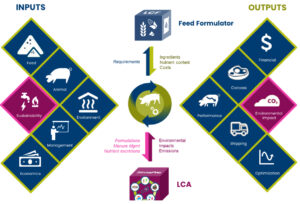
Source: Ferguson (2023).
Accurate sustainability insights
One of the latest added features to the tool is the sustainability component. The tool allows to evaluate how feed efficiency, economic viability, and sustainability are connected on the pig farm. The service tool offers an enhanced life cycle analysis (LCA), that allows sustainability metrics to be combined with production, nutrition, and shipping practices.
The LCA predictions meet the ISO standards for determining a facility’s environmental footprint using the Global Feed LCA Institute (GFLI) Agri-footprint and Ecoinvent data, and Intergovernmental Panel on Climate Change (IPCC) Tier 2 emissions. The use of 3rd party sustainability software is in alignment with global sustainability standards rather than operating in a standalone fashion.
Additionally, the tool can provide predictions to improve a diet’s environmental footprint by limiting nutrient waste and environmental contamination. A more precise diet results in fewer wasted nutrients, less greenhouse gas emissions, and a reduced environmental footprint. When pigs are able to use more of the nutrition in their diet, fewer wasted elements like nitrogen and phosphorous are excreted into the environment.
A better market strategy
Raising a uniform herd starts with management practices during the nursery phase and calls for a balance between input costs, price paid, and meat quality. While an all-in, all-out method to pig raising is often used as a disease prevention protocol, the practice also can mean sending pigs to market with very different weights – some pigs may stall at 80 kg while their herd mates reach 120 kg. To address this disparity, producers may adopt a slow, middle, and fast growth system to identify batches of pigs to send for processing. However, this practice tends to be managed by “eye” and trial and error, so it can be slow and inefficient. The tool can evaluate information about pigs in the herd, diet, and slaughterhouse results to evaluate strategies and suggest a method with the potential for a better economic return. It also can support cost savings by optimising diet ingredients and suggesting changes to marketing and management practices.
Making the right changes
It has been said that change begets change; and any change in one aspect of pig production will affect other aspects of the business. By accounting for a range of variables including animal genetics, barn conditions, animal health, feed, shipping, and energy use, the tool leverages real-world data to predict how changes will influence both herd performance and the bottom line.
By optimising the use of feed ingredients and/or feed additives, swine producers can not only save costs, but also produce stronger and healthier animals, and be more equipped to deal with regulatory changes volatile market conditions, antibiotic reduction programmes, sustainability goals, and more.
Advanced training support
Proper training is key to getting the most out of any tool on the farm. With this in mind, Trouw Nutrition offers comprehensive training to help swine professionals secure the most value from the tool’s predictive capabilities. The advanced training support is especially beneficial for large swine integrators with in-house technical teams and feed production capabilities. Additionally, the tool can be integrated with a special software tool to inform least cost formulation.


